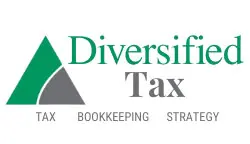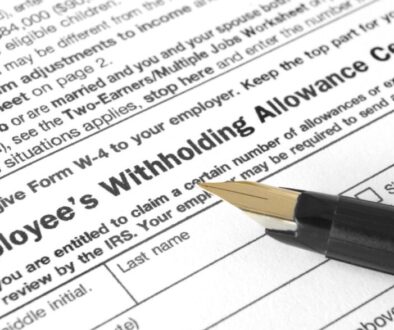Navigating Through Tax Liens: A Step-by-Step Guide
A tax lien represents the government’s legal claim against a property when the owner fails to pay the owed taxes. This mechanism ensures that the property cannot be sold or refinanced until the debt is cleared and the lien is removed, making understanding tax liens crucial for property owners. The concept of a tax lien plays a pivotal role in the financial obligations between property owners and governmental tax authorities, emphasizing the importance of staying informed about tax liabilities.
This article aims to navigate the complex world of tax liens, detailing their impact on property owners and distinguishing them from tax levies. With a focus on resolving tax liens and preventing them from occurring, the guide provides step-by-step instructions designed to help property owners manage their tax-related challenges effectively. As taxes are an integral aspect of property ownership, grasping the intricacies of tax liens is essential for ensuring financial and legal stability.
Understanding Tax Liens
Understanding the intricacies of tax liens is vital for property owners and investors alike. Here’s a breakdown of how tax liens work, their implications, and the role of various entities:
- Issuance and Auction of Tax Liens:
- Local governments issue a tax lien certificate after placing a lien, detailing the owed amount. This certificate is then auctioned to investors.
- Legal Implications and Resolution:
- A tax lien is a legal claim securing a debt, attached to the property of the named individual or entity. It affects the taxpayer’s assets, credit, and business dealings.
- Resolution options include full payment, debt settlement, or waiting for the statute of limitations to expire. In some states, tax liens can be purchased by investors, who then collect payments with interest from the property owner.
This structured approach to understanding tax liens highlights their significance in the financial landscape, emphasizing the need for property owners and investors to stay informed and proactive.
The Impact of Tax Liens on Property Owners
A tax lien significantly impacts property owners by placing a legal claim on their assets, making it a priority over other liens. This can lead to foreclosure if the tax debt remains unpaid. Here are key points detailing the consequences and potential resolutions for property owners facing tax liens:
- Priority and Foreclosure Risk:
- Tax liens take precedence over other liens, including mortgages.
- Unpaid tax liens can result in foreclosure, eliminating other liens.
- Impact on Property Transactions:
- The presence of a lien complicates the process of transferring, selling, or refinancing property.
- Liens must be fully paid for release, and the IRS typically releases the lien within 30 days post-full payment.
- Credit and Employment Implications:
- Tax liens adversely affect credit scores, hindering the ability to obtain credit or secure new employment.
- Certain industries, notably financial services, conduct credit checks on job candidates, where a tax lien could be detrimental.
For property owners, understanding these impacts is crucial, alongside knowing the pathways to resolve tax liens, such as full payment or negotiating for subordination or partial release under specific circumstances.
The Difference Between Tax Liens and Tax Levies
Understanding the distinctions between tax liens and tax levies is crucial for property owners to navigate their tax obligations effectively. Here, we outline the key differences:
Tax Liens vs. Tax Levies: Key Differences
- Public Record and Credit Impact:
- Tax Lien: Is a public document and may negatively impact your credit report.
- Tax Levy: Not a matter of public record and should not affect your credit score.
- Nature of Action:
- Tax Lien: Represents a legal claim against your property for unpaid taxes, restricting the sale or refinancing of the property.
- Tax Levy: Involves the actual seizure of property, such as real estate, personal property, or cash in bank accounts, to satisfy tax debts.
- Assets Affected:
- Tax Levy: The IRS can seize a wide range of assets including wages, bank accounts, retirement accounts, homes, and business equipment. However, certain assets like unemployment benefits and workers’ compensation are exempt.
- Notice and Appeal:
- The IRS sends a Final Notice of Intent to Levy, providing a 30-day period for the taxpayer to appeal the proposed action.
Understanding these differences enables taxpayers to better manage their obligations and avoid the severe consequences of tax levies, such as the loss of property or significant financial strain.
Options for Resolving Tax Liens
When addressing the challenge of resolving tax liens, property owners and debtors have multiple avenues to consider. These options range from complete repayment to legal adjustments that can alleviate the burden of the lien. Below, we outline the primary strategies for addressing and ultimately resolving tax liens:
- Full Payment and Removal:
- Paying the Tax Debt in Full: The most direct method to resolve a tax lien is by paying off the owed amount in its entirety. Upon full payment, the IRS is obligated to release the lien within 30 days.
- Offer in Compromise (OIC): This agreement allows for the removal of the lien upon settling the tax debt for less than the amount owed, contingent upon IRS approval.
- Legal Adjustments:
- Discharge of Property: This action specifically removes the lien from a particular piece of property, thereby not affecting its sale or refinancing.
- Subordination: Through subordination, other creditors are given priority over the IRS, which can facilitate financing or property sale.
- Withdrawal: This removes the public notice of a Federal Tax Lien from credit reports, although the lien itself remains until the debt is cleared.
- Special Circumstances:
- Bankruptcy: In some cases, filing for bankruptcy may lead to the elimination of tax debt, though this is a complex process with varying outcomes.
- Challenging the Tax Assessment: If the initial tax assessment is believed to be incorrect, filing a Petition for Reassessment may lead to adjustments in the tax liability.
- Error Correction: If a tax lien was filed in error, proving this to the IRS can lead to its withdrawal.
Each of these options requires careful consideration and, in many cases, legal counsel to navigate effectively. Property owners and debtors should assess their specific situations to determine the most viable path toward resolving their tax liens.
Preventing Tax Liens
Preventing tax liens involves a proactive approach to managing tax obligations. Here are several strategies to consider:
- Immediate Measures:
- Pay your tax debt in full to ensure the IRS releases the lien within 30 days.
- Utilize the discharge of property option to remove the lien from specific property, under certain conditions detailed in Publication 783.
- Explore subordination (Publication 784) to allow other creditors precedence over the IRS, aiding in loan or mortgage approval.
- Withdrawal actions, including removing the public Notice of Federal Tax Lien (Form 12277), do not eliminate your liability but improve credit standing.
- IRS Installment Agreements:
- Regular, Direct Debit, Streamlined, Payroll Deduction, and Partial Payment Installment Agreements offer structured repayment plans.
- A guaranteed installment agreement is available for balances $10,000 or less; streamlined agreements apply to balances of $25,000 or less.
- In cases of financial hardship, request “currently not collectible” status or an offer in compromise.
- Best Practices for Prevention:
- File and pay taxes on time to avoid liens.
- Engage in due diligence if considering investing in tax liens, as other liens or property issues could affect the outcome.
- Establish a payment plan with the IRS or request an offer in compromise as preventative measures.
By adopting these strategies, property owners can navigate their tax responsibilities more effectively, minimizing the risk of encountering tax liens.
Conclusion
Throughout this comprehensive guide, we’ve explored the multifaceted world of tax liens, highlighting their implications for property owners, the legal intricacies involved, and the various strategies for resolution and prevention. The significance of understanding tax liens cannot be overstated, as they carry considerable consequences on property ownership, credit, and financial stability. By delineating between tax liens and tax levies, the article has provided readers with the essential knowledge to navigate these complex issues proactively.
Moreover, this guide underscores the importance of early intervention and informed decision-making in managing or preventing tax liens. Whether through full repayment, legal adjustments, or leveraging options like the offer in compromise, there are clear pathways to resolving tax liens effectively. As we conclude, remember the criticality of staying informed, seeking professional advice when necessary, and adopting a proactive approach to tax obligations to safeguard financial and property interests.




